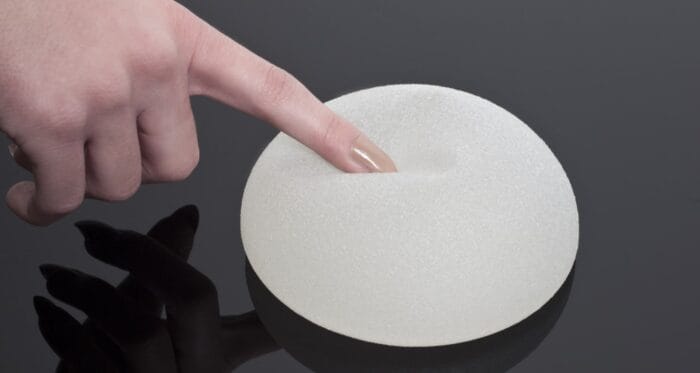

Beyond the Procedure: What Truly Impacts Your Results
When it comes to plastic surgery, most people think success depends solely on the procedure itself. A tummy tuck is a tummy tuck, a breast aug is a breast aug…right?
Not necessarily.

The reality is that what truly affects your plastic surgery results and your overall experience with cosmetic surgery isn’t just the hour or two spent in the operating room.
It’s the thoughtfulness of the plan, the experience of your surgeon, your body’s anatomy, the post-operative care, and how you follow your post-op instructions and care for yourself afterward. In other words, achieving long-lasting, natural-looking results and a seamless experience before, during, and after surgery depend on far more than what happens in the operating room.
If you’re considering aesthetic surgery, here’s what you need to know about what impacts healing after plastic surgery, how to maintain your results, and why choosing a surgeon who treats you like an individual—not a template—matters more than you think.
Why Personalized Planning Matters More Than Trends
Cosmetic trends come and go (ultra high-profile “bolted on” implants, impossibly exaggerated curves, ultra snatched waists achieved by breaking ribs) but the human body is not a canvas for trends. Following popular procedures without considering personal anatomy or lifestyle often leads to disappointment or revision surgery. Personalized plastic surgery planning is essential to safe, lasting results.
Every Surgical Plan Should Start With the Patient
No two bodies are identical, and no two surgical plans should be either. A well-structured consultation goes far beyond aesthetics, taking into account lifestyle habits, health history, hormonal considerations, future life changes (such as pregnancy or weight loss), and long-term expectations. These details drive custom cosmetic care that reflects and respects the individual.
One Size Doesn’t Fit All
Standardized approaches may work in high-volume clinics, but they ignore anatomical variables that can significantly impact results. Incision placement, skin tension, implant profile, and procedural combinations must all be tailored to the patient. What works for one person can lead to complications or unnatural results in another.
Implant Selection Requires More Than Preference
In breast surgery especially, implants must be carefully matched to the chest wall, soft tissue characteristics, and aesthetic goals. Some surgeons select from a handful of implants that they use for all patients, and somehow every single patient magically requires between 300 and 450cc placed under the muscle through a periareolar incision. In reality, a 350cc implant is going to give a very different result on a woman who is 5’1” and currently wearing a 32A bra compared with a woman who is 5′ 9” currently wearing a 40C. At Lawrence Park Plastic Surgery, we take dozens of measurements and combine those with each patient’s specific goals to find the exact right implant out of the hundreds of saline and silicone gel options available in Canada, ensuring maximum flexibility in planning and ultra-bespoke results.
Whether it’s choosing between saline or silicone; low, low plus, moderate, moderate plus or high profile; percentage of gel fill or cohesivity of the gel—understanding the nuances of each option allows the surgical plan to be fully customized for both look and longevity.
One-on-One Care Delivers Consistency
Effective results rely not only on surgical skill but on thorough planning and consistency of care. Working directly with the surgeon, from consultation through recovery, builds trust, minimizes confusion, and allows for real-time adjustments based on healing progress. In contrast, fragmented care with rotating staff where the surgeon is involved briefly at the consultation, for the surgery itself and then at one or two key followup appointments can lead to inconsistent messaging, difficulty in getting questions answered and avoidable frustrations and complications.
What “Natural” Really Means in Plastic Surgery
“Natural” is one of the most common requests in plastic surgery, but it’s also one of the most misunderstood. In this context, “natural results” doesn’t mean invisible results. It means anatomically appropriate and actually possible to have occurred in nature, but would actually occur naturally for only the luckiest few (think Julia Roberts or Emily Ratajakowski). It means results that are proportionate to the rest of the body. Most importantly, it means results that look authentic and align with the patient’s self-image.
The Art of Subtlety
True aesthetic expertise is often about knowing what not to do. Many of the most impactful results are subtle—a minor lift, a modest implant, a conservative skin adjustment—designed to enhance rather than overwhelm. This level of restraint requires technical skill, yes, but also a refined aesthetic judgment.
Tailored Techniques, Not Templates
Surgical techniques must adapt to the patient’s anatomy in real time. Skin elasticity, fat quality, and tissue response vary not just from person to person, but from side to side. Techniques such as implant pocket placement when considering both the chest and the nipple location, suture strategy, liposuction contouring and tension adjustments must be customized during surgery, not dictated by a one-size-fits-all protocol.
This is where individual anatomy and surgical planning intersect most clearly.
Real Results, Real Confidence
A successful outcome supports a patient’s confidence and identity, not just their appearance. When a procedure is well-executed and personalized, the result isn’t “Wow, you had surgery.” It’s “You look great! Something’s just working.”
That alignment between how someone feels and how they look is the true goal of personalized aesthetic procedures.
Six Key Factors That Influence Your Results
These six considerations significantly affect both the quality and durability of cosmetic surgery outcomes:
- Skin Quality and Elasticity: Skin with good elasticity adapts better to surgical changes. Whether the goal is tightening, lifting, or contouring, the ability of the skin to retract and conform is a major determinant of success. This is especially true in liposuction, facelifts, and combined breast procedures.Patients with poor skin quality may require modified approaches or additional treatments to achieve desired outcomes.
- Age and Hormonal Health: Age alone doesn’t disqualify a patient from surgery, but it does affect how the body responds. Healing times may be longer, and tissues may not tolerate aggressive manipulation as well.Hormonal factors—such as postpartum changes or perimenopausal shifts—also play a role in how fat is stored, how skin behaves, and how long results will last. These variables must be incorporated into preoperative planning.
- Lifestyle Habits: Smoking, alcohol, poor diet, and lack of rest all interfere with recovery. These factors can increase the risk of complications such as wound breakdown, poor scarring, and prolonged swelling.Safe plastic surgery practices require not just a skilled surgeon, but a patient who is committed to the healing process. Optimizing health before and after surgery is one of the most controllable ways to improve results.
- Weight Stability: Weight fluctuations can stretch the skin and distort the effects of procedures like liposuction, tummy tuck, or breast surgery. Patients are strongly advised to reach and maintain a stable weight before undergoing elective surgery and to remain within a consistent range of +/-5-10 lbs of that weight afterward.
- Post-Operative Care: Following recovery instructions is not optional, it’s part of the treatment. Wearing compression garments as directed by your surgeon (NOT by Youtube, TikTok, your Lymphatic Masseuse or even the person who sold you the garment), avoiding certain movements, attending follow-up appointments, and adhering to guidance with your dressings all influence the final result.This is why many high-performing practices emphasize surgical recovery success factors as part of their care philosophy.
- Your Surgeon’s Experience: Ultimately, your surgeon’s experience determines how well the plan is made and how well it’s executed. A good surgeon performs a procedure as promised. A great surgeon not only performs the technical aspects of a procedure, but also anticipates challenges, adjusts strategy mid-surgery if needed, and guides patients with clarity and care through the pre-operative and post-operative periods as well.When complications arise (as they sometimes do), experience is what minimizes the impact and protects the final outcome.
Why Continuity of Care Is Non-Negotiable
Many high-volume clinics divide care across multiple providers: one for consultations, another for surgery, another for follow-up. While efficient on paper, this model can lead to confusion, miscommunication, and a lack of accountability.
Continuity (working with the same provider throughout) is not just comforting, it’s critical. It allows for surgical plans to be carefully developed for each patient and executed exactly as intended, with the flexibility to adapt if recovery doesn’t go exactly as expected.
No handoffs. No surprises.
It’s About More Than a Procedure, It’s About the Experience
Plastic surgery is a physical transformation, but the emotional and psychological dimensions are just as important. A patient’s experience—how informed they feel, how supported they are, how clearly expectations are communicated—plays a direct role in how satisfied they are with their results.
A well-run practice provides not just surgery, but structure. Education. Emotional reassurance. Predictability. These elements reduce anxiety and improve the healing process.
Choose Your Surgeon, Not Just Your Surgery
Selecting a procedure is important, but selecting the right surgeon is critical. This is the person who will assess your goals, guide your expectations, manage your risks, and ultimately shape your outcome.
The best results come from personalized plans, steady hands, and clear communication. Personalized surgical planning for optimal plastic surgery results starts with choosing someone who understands that your body, your lifestyle, and your goals are entirely your own.



